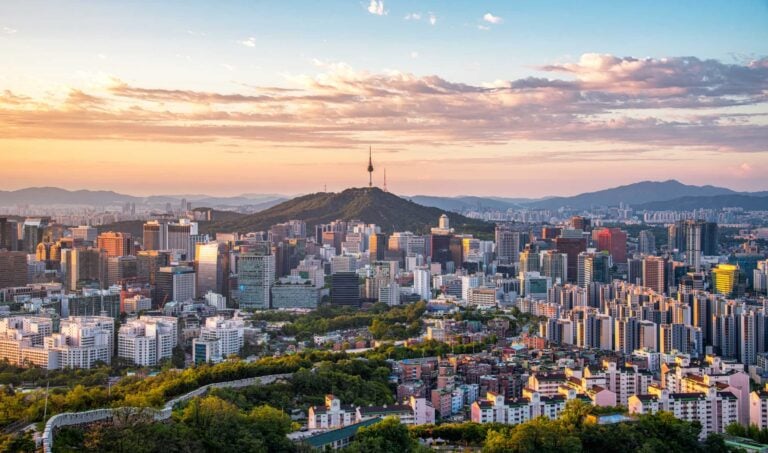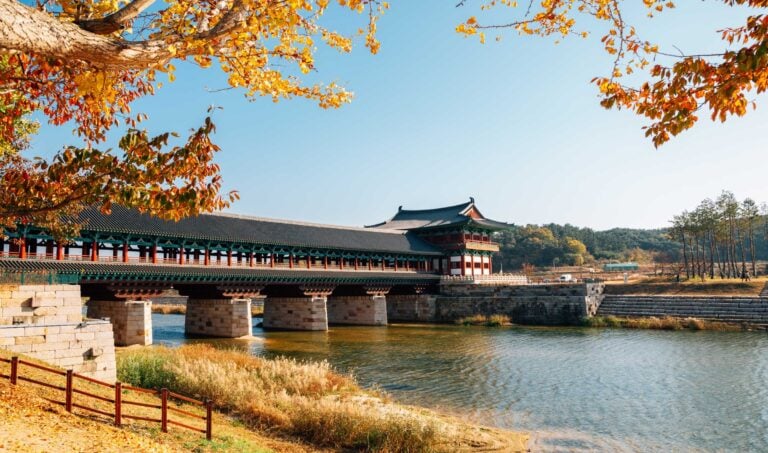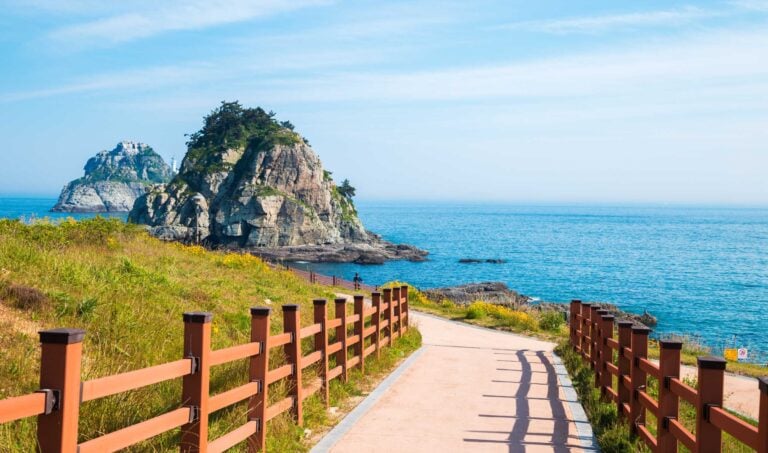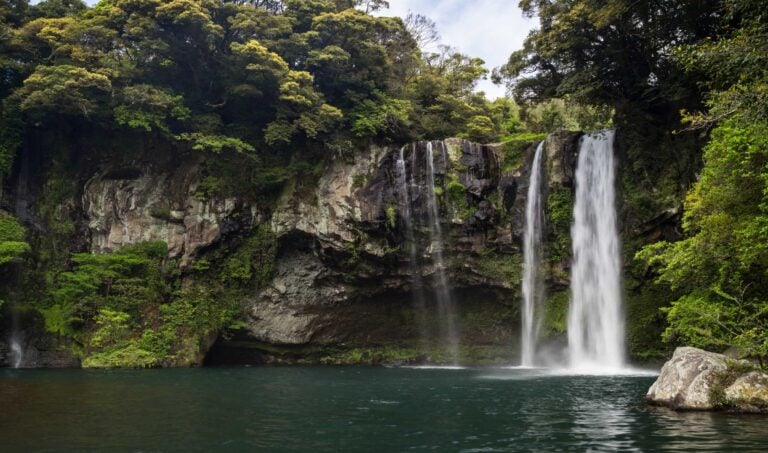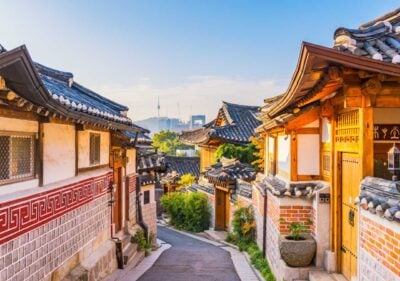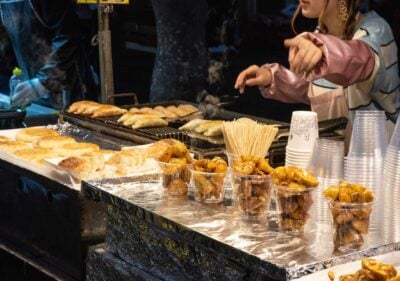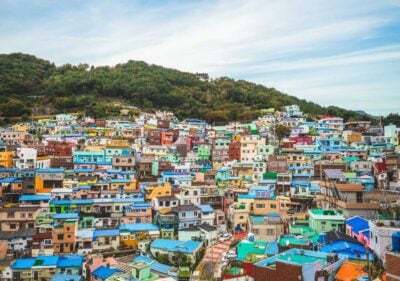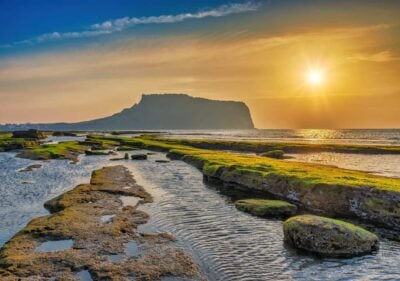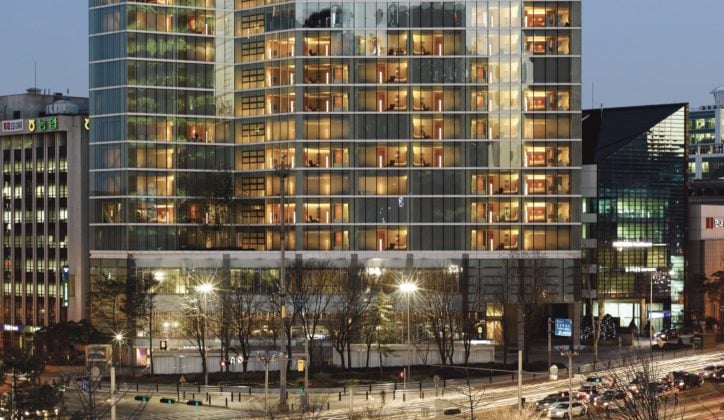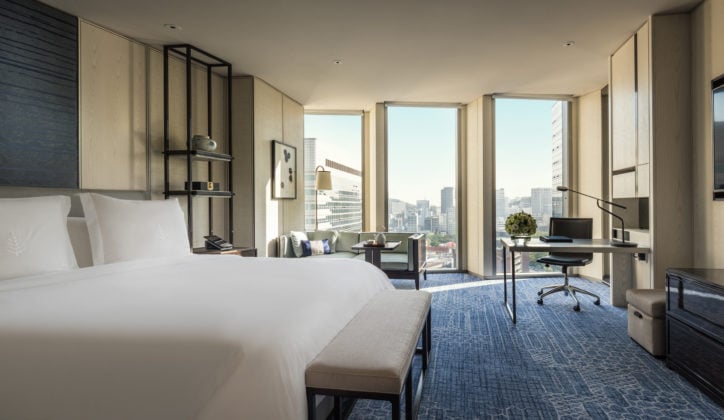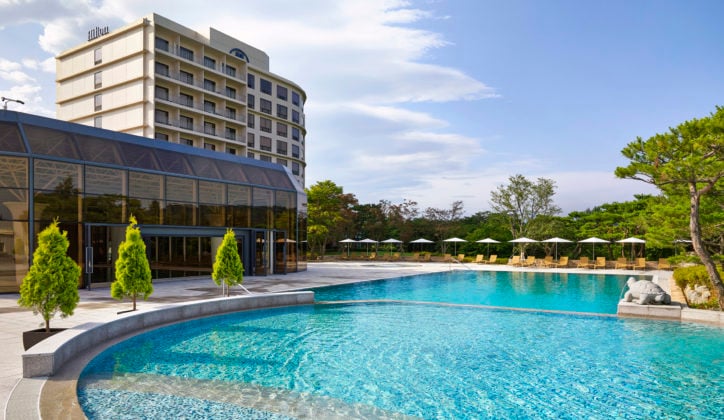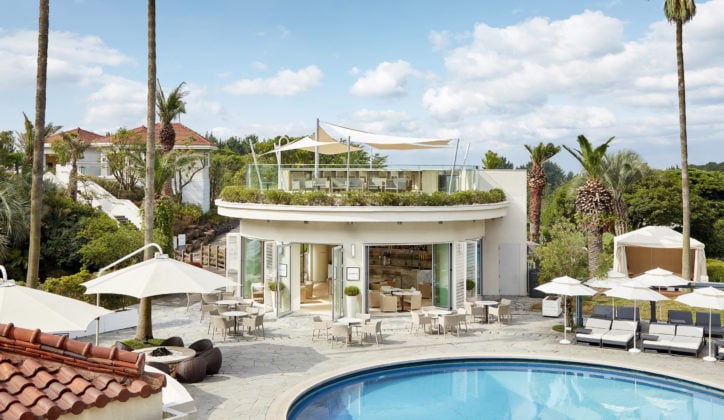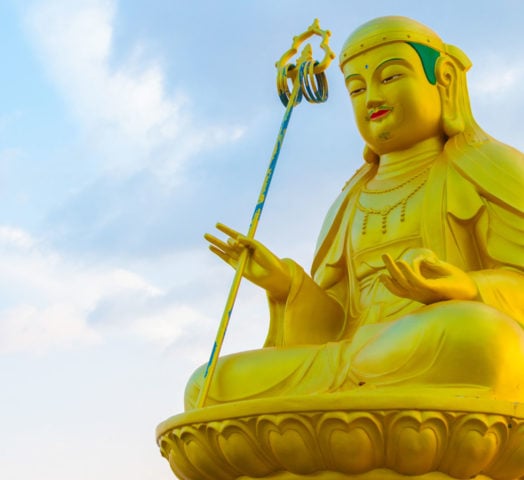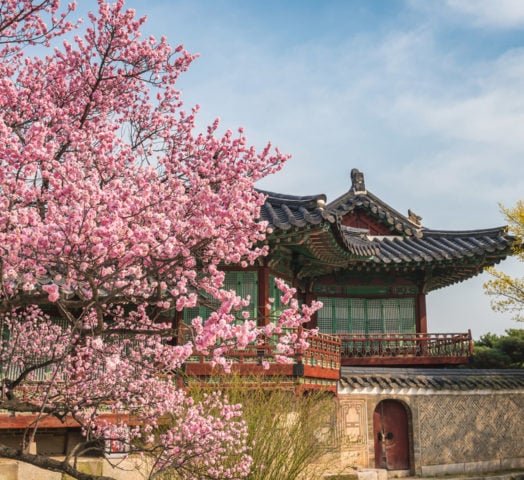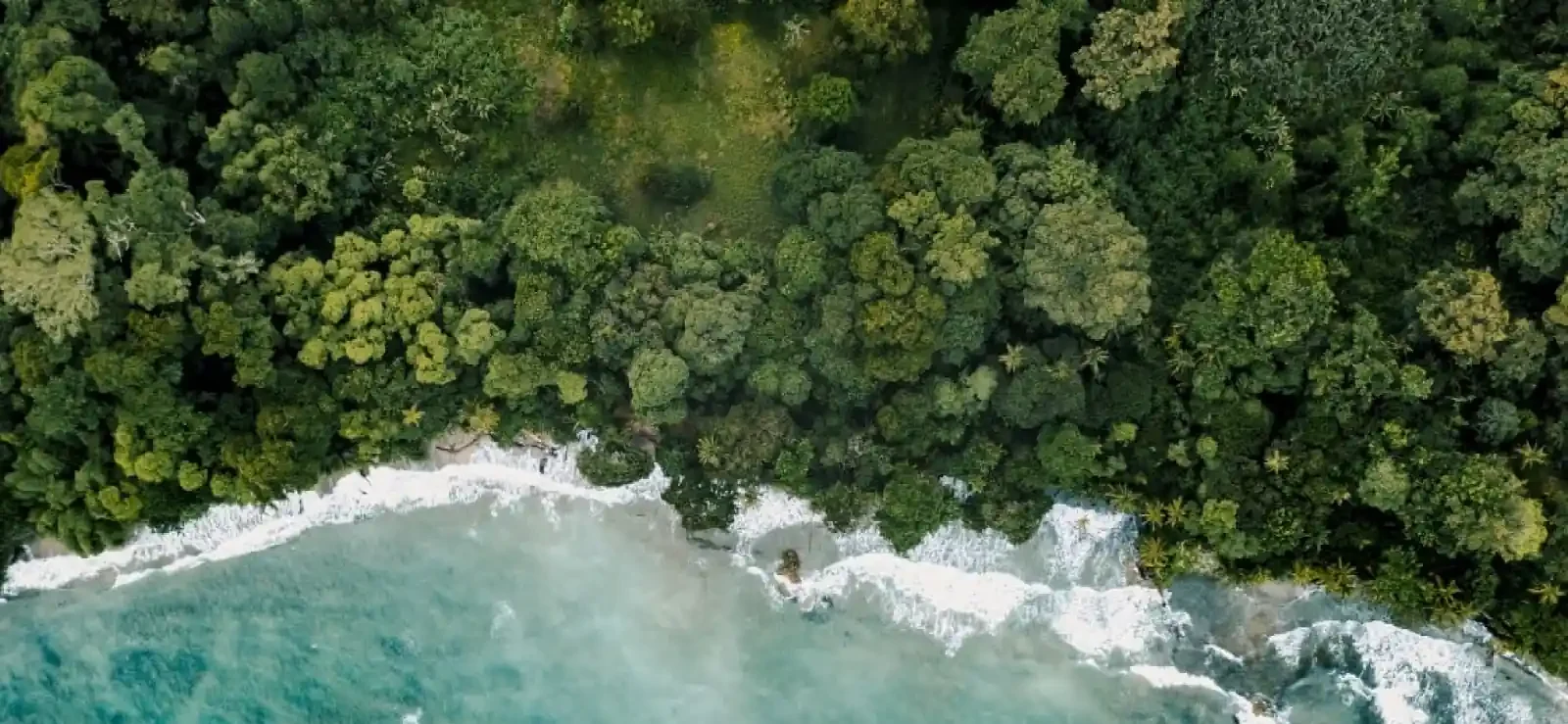Complete South Korea
Trip highlights
- Visit the grand royal palaces of Seoul
- Delight in Korean street food at a local market
- Travel to the ancient kingdom of Silla in Gyeongju
- Explore hidden waterfalls in Jeju Island
Bespoke trips with Jacada
We design one-of-a-kind journeys incorporating luxury in all its forms. Our bespoke trips include:
- Luxury accommodation throughout
- Privately guided tours
- Private transfers
- Meticulously selected experiences
- Expertise and support from your Jacada Concierge

- Days 1-5 Seoul
- Days 5-6 Gyeongju
- Days 6-8 Busan
- Days 8-11 Jeju Island
- Days 1-5 Seoul
- Days 5-6 Gyeongju
- Days 6-8 Busan
- Days 8-11 Jeju Island
Itinerary in detail
Every Jacada trip is tailored to your personal preferences and interests. Below you’ll find a sample itinerary to inspire your own custom-designed journey.
An introduction to Seoul
Seoul, South Korea’s sprawling capital, is a bustling metropolis that encapsulates the essence of East Asia, blending cutting-edge technology with deep-rooted traditions. With over half of the nation’s population residing in its metropolitan area, Seoul stands as a vibrant hub of culture and commerce. Bisected by the Han River into historic ‘Gangbuk’ in the north and modern ‘Gangnam’ in the south, Seoul comprises 25 districts, or gu, each akin to a small city in terms of size and population.
Exploring Seoul unveils a treasure trove of attractions, including five grand palaces, numerous temples and captivating museums. Food enthusiasts will relish in the abundance of street food, bustling markets and top-notch restaurants, while the city’s nightlife districts pulse with energy, making Seoul one of the liveliest urban scenes worldwide. Beyond the city limits, surrounding mountains offer breathtaking views and rewarding hiking trails.
During your four nights in Seoul, you’ll also have the opportunity to visit Changdeokgung Palace and its secret garden, as well as Bukchon Hanok Village, offering insight into Korean life six centuries ago. Additionally, you’ll embark on a poignant journey to the War Memorial of Korea, honouring the nation’s history and a visit to the DMZ, a unique glimpse into the geopolitical tension between North and South Korea.
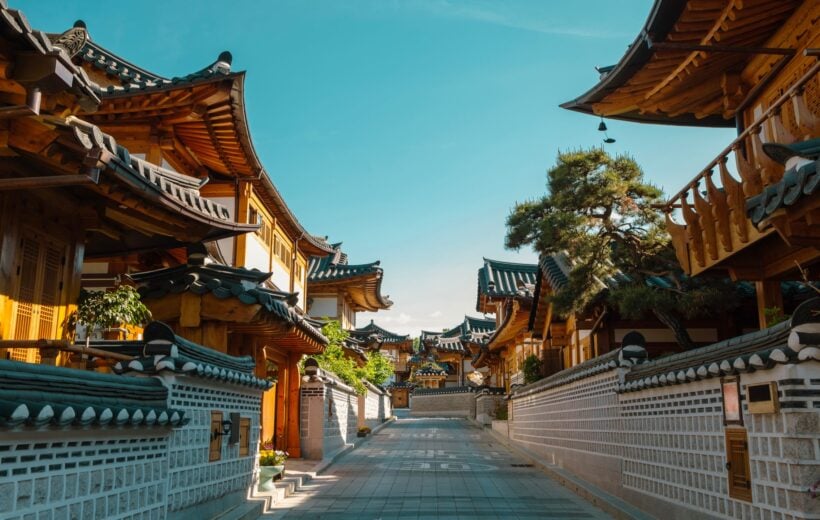
Make it mine
For food
For art
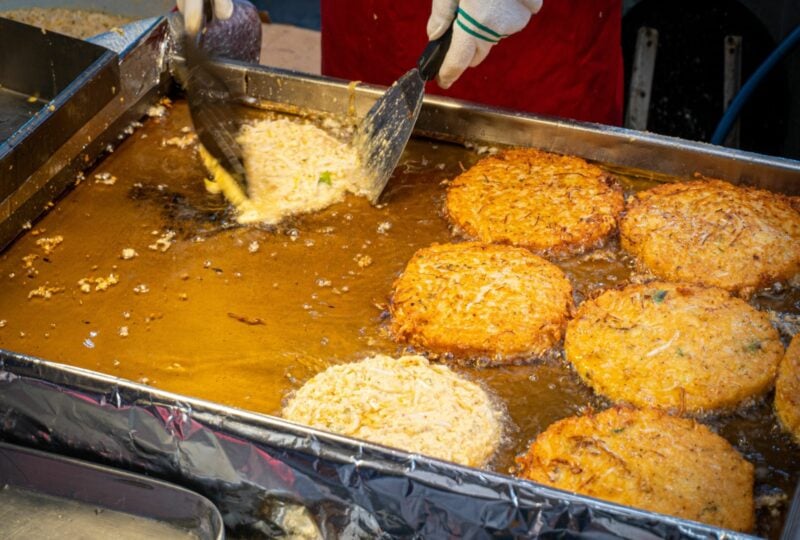
Gwangjang Market tour
Gwangjang Market, one of Seoul’s oldest and most iconic markets, has a rich history dating back over a century.
Established in 1905 during the Japanese occupation of Korea, the market initially served as a hub for silk trading, catering to the needs of the local populace.
Today, Gwangjang Market stands as a thriving epicenter of South Korean culture, renowned for its traditional textiles, handicrafts and, above all, its delectable street food.
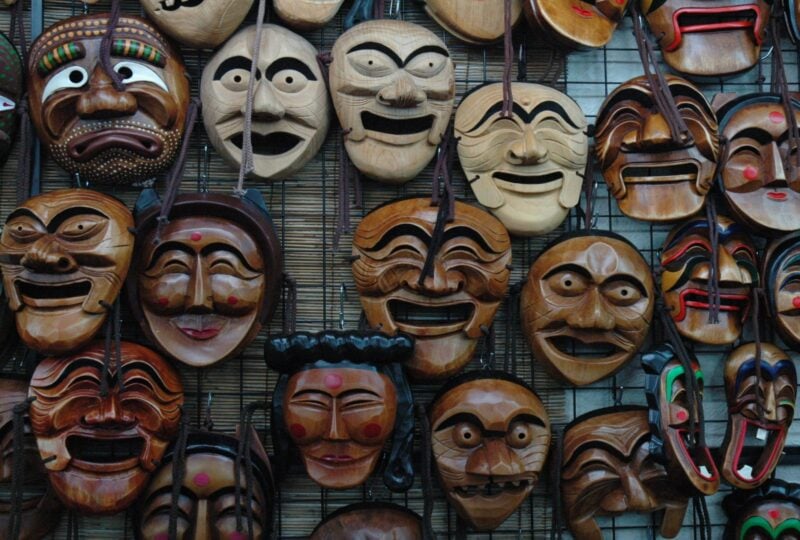
Insa-dong Art Street tour
Explore this charming thoroughfare, lined with galleries, boutiques and artisan shops, offering a glimpse into South Korea’s rich heritage through traditional paintings, calligraphy and handcrafted treasures.
Step back in time at the Korean Folk Village
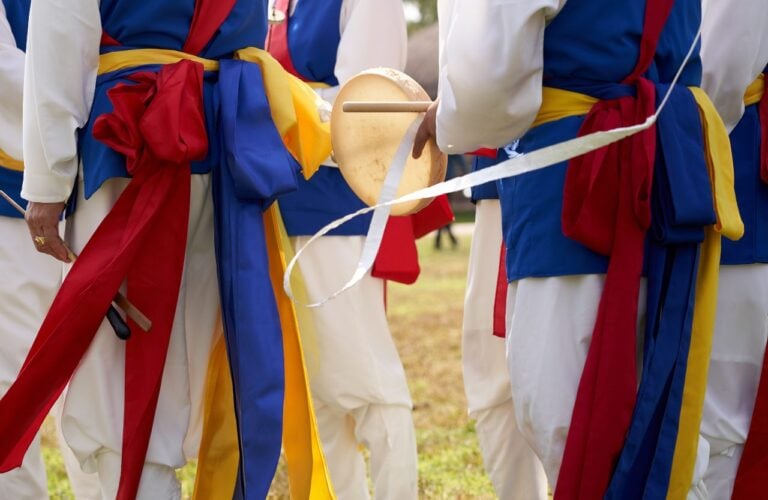
Experience a journey through time at the Korean Folk Village, a dynamic living museum that meticulously recreates historic and traditional houses, providing a fascinating insight into South Korea’s rich cultural heritage across different social classes and eras. Witness captivating performances including nongak farmer’s music, martial arts demonstrations, horseback displays, traditional dances and authentic wedding ceremonies, offering a vibrant immersion into the diverse tapestry of Korean traditions and customs.
Architectural marvels
Sky Observatory
Dongdaemun Design Plaza
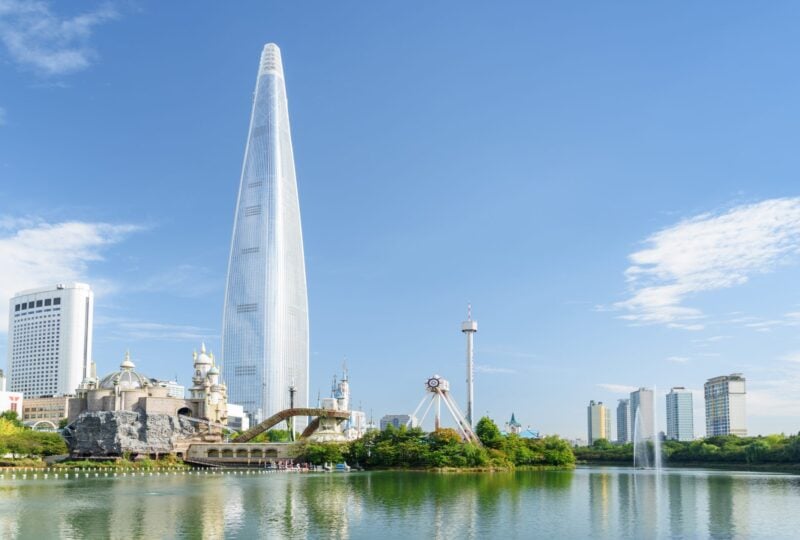
Lotte World Tower Seoul
Visit the Lotte World Tower, South Korea’s tallest skyscraper and currently the world’s sixth tallest building. Ascend to the Seoul Sky observatory spanning floors 117 to 123, where the Sky Deck, perched at 478 meters, boasts the Guinness World Record as the highest glass-floored observatory globally.
Through towering two-story glass windows, marvel at uninterrupted panoramic views of the city, revealing its breathtaking beauty both day and night.
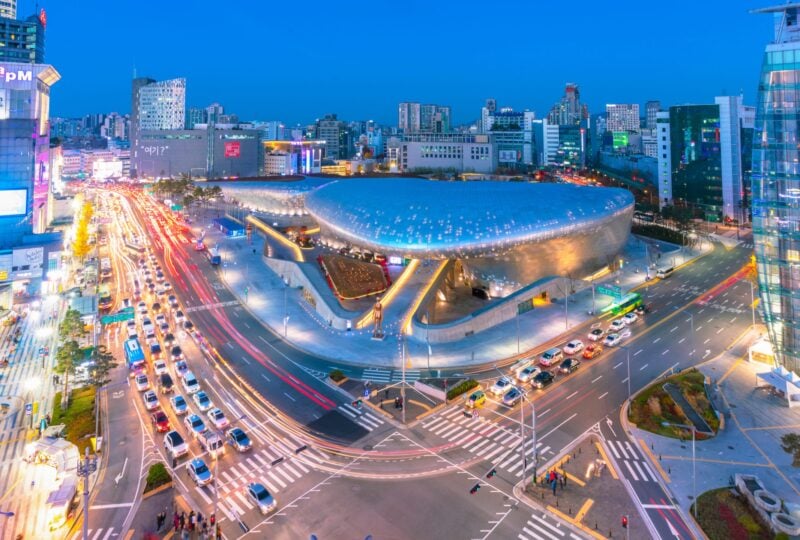
Dongdaemun Design Plaza
Situated at the heart of the Dongdaemun district, the DDP has swiftly emerged as Seoul’s iconic landmark, rivalling the likes of the N Seoul Tower.
Its striking neofuturistic design encompasses expansive exhibition halls, art spaces, and an array of shops.
Additionally, nestled within its sweeping contours lies the Dongdaemun History & Culture Park, showcasing historical remnants unearthed during the plaza’s construction, adding a layer of intrigue to its contemporary allure.
Where you could stay
Seoul
Overview
In Seoul’s exclusive Gangnam District, the Park Hyatt’s towering glass structure encloses a thoroughly modern and understatedly elegant city hotel. It has an unmistakably Korean soul, littered as it is with select Korean antiques and works by local artists.
There are a grand total of 185 guestrooms including 38 suites, the generous space maximised by the floor to ceiling windows and incredible city views in every room. Bathrooms don’t scrimp on size either with deep soaking baths and a rain shower.
A particular highlight of the hotel is the 24th floor infinity pool with expansive vistas best at sunset. There’s also a modern fitness studio and spa.
The Park Hyatt Seoul has three dining options; Cornerstone, an open kitchen restaurant specializing in grilled meats and seafood prepared in wood-burning ovens, the 24th floor Lounge’s Korean dishes and light snacks, and the Timber House, with its three bars (Sake/Soju/Sushi, Whisky and Cocktails) and exquisite Japanese cuisine.
→ Find out moreSeoul
Overview
Located in the heart of Seoul, the Four Seasons is a luxury five-star hotel perfectly positioned to allow guests to soak up the energy of this vibrant city.
The hotel decor is a mix of old and new. Its 317 rooms and suites combine classic Korean motifs with a clean, modern aesthetic. Floor-to-ceiling windows ensure rooms are filled with natual light, and offer incredible views out over the city towards the mountains in the distance.
Eating and drinking at the hotel is a real treat, with seven restaurants and bars to choose from. Enjoy sushi and Japanese sharing plates at Kioku, Italian cuisine served straight from the open kitchen of Boccalino, Korean favourites at Maru, or Cantonese at the Michelin-starred Yu Yuan.
Indulge in a treatment in the spa, unwind in the Korean sauna, work out in the gym or take a dip in the indoor swimming pool. There is also a golf simulator where five 3D screens display courses from around the world and state-of-the-art technology means you can analyse swing and posture without having to step foot outside.
→ Find out moreOne night in Gyeongju
Immerse yourself in the rich history of Gyeongju, once the capital of the illustrious Silla kingdom that reigned over much of the Korean Peninsula from 57 BC to 935 AD. At its zenith, Gyeongju stood as one of the largest cities on the planet, boasting an unparalleled cultural legacy. Dubbed as ‘the museum without walls’, the city is adorned with a myriad of historic temples, tombs, pagodas and statues. Among the remarkable remnants are the 8th-century Bulguksa Temple and the nearby Seokguram Grotto, home to some of the finest Buddhist sculptures globally. Explore the earthen mound tombs nestled in Tumuli Park, along with a multitude of meticulously preserved fortresses and palaces, all encapsulating the grandeur of Silla’s glorious past.
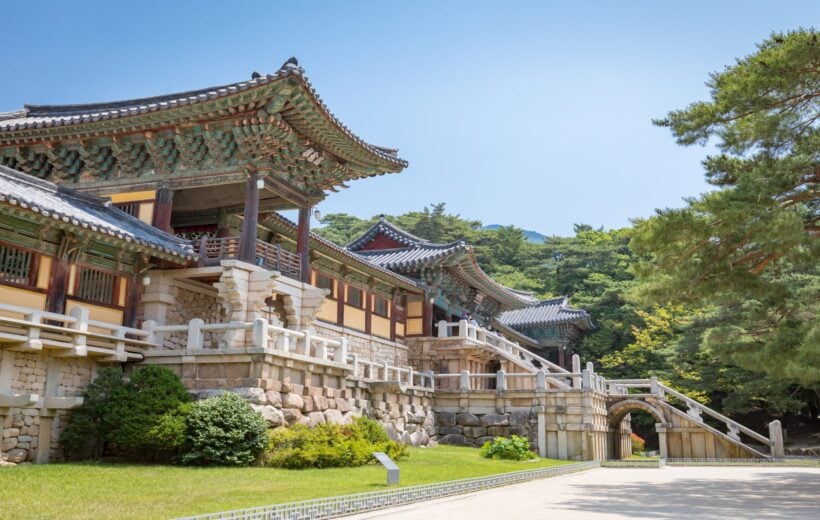
Top highlights
Temple
Tomb
Palace
Palace
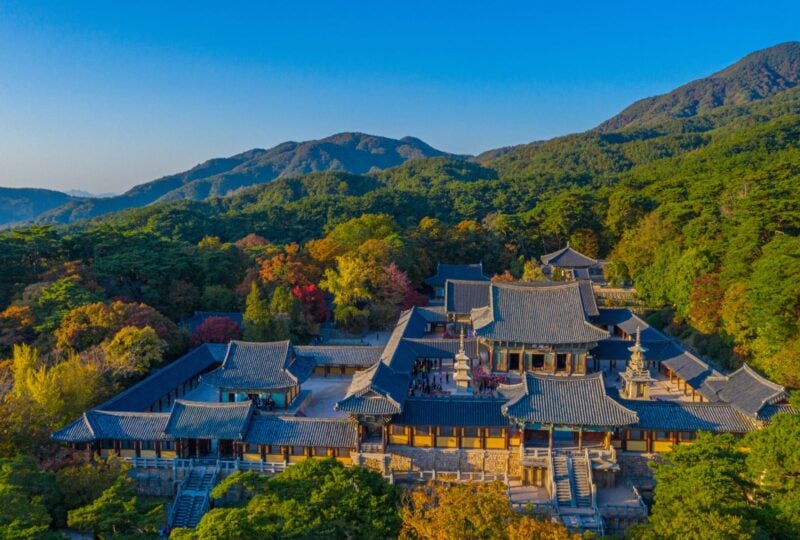
A tour of Bulguksa Temple and Seokguram Grotto
Explore Bulguksa, an 8th-century Buddhist temple complex on Mount Toham, a UNESCO World Heritage Site housing South Korea’s cherished national treasures.
The grounds, symbolising Buddha’s realm, feature three main areas – Birojeon, Daeungjeon and Geungnakjeon –surrounded by exquisite stone terraces, bridges and pagodas showcasing ancient masonry skills.
Nearby, Seokguram Grotto boasts a monumental Buddha statue and intricate depictions of gods, Bodhisattvas, and disciples, representing a pinnacle of Buddhist artistry in the Far East.
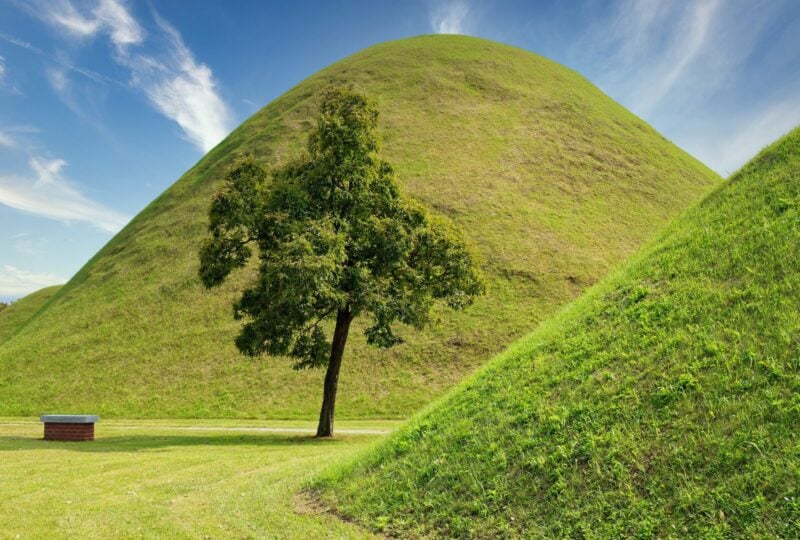
Visiting Daereungwon Tomb Complex and Cheomseongdae Observatory
Explore Gyeongju’s rich history with a tour of the Daereungwon Tomb Complex, showcasing ancient burial mounds like the famous Cheonmachong. Unearthed in 1973, it contained over 11,500 artifacts, including a lacquered wooden coffin adorned with burial goods.
Nearby, discover Asia’s oldest surviving astronomical observatory, Cheomseongdae, dating back to the 7th century and used for weather forecasting through star observation.
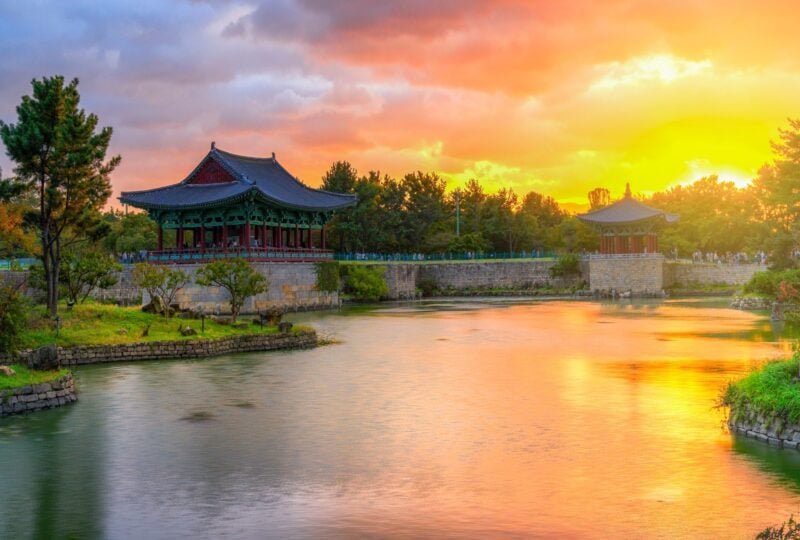
Exploring Donggung Palace and Wolji Pond
Enjoy a private guided tour of Gyeongju Donggung Palace and Wolji Pond, once the secondary palace for the crown prince and a prestigious banquet venue for important national events and dignitaries.
Despite its abandonment after the fall of the Silla dynasty, this historical site regained its prominence when a pottery fragment bearing the inscription “Wolji,” meaning “a pond that reflects the moon,” was unearthed in the 1980s.
This discovery led to the site’s renaming as Donggung Palace and Wolji Pond, restoring its rightful place as a cherished cultural treasure.
Where you could stay
Gyeongju
Overview
Hilton Gyeongju is located by Lake Bomun, surrounded by mountains but just 20 minutes from downtown.
There are 330 rooms and suites, spacious and bright with large windows and marble bathrooms. Most come with a balcony overlooking the lake.
Guests are spoiled for choice when it comes to eating and drinking with six restaurants and bars on site. Enjoy Italian cuisine at Da Vinci which overlooks the hotel gardens, sushi and Japanese cuisine at Genji, or Cantonese and Sichuan at Silkroad. There is also a cocktail lounge on the 9th floor, a lobby lounge and a poolside bar.
When you’re not out exploring, take some time to enjoy the fitness room, swimming pool, jogging track and bikes that are available for guests to use.
→ Find out moreTwo nights exploring Busan
With two nights to explore, immerse yourself in the vibrant energy of Busan, South Korea’s second-most populous city and the bustling economic and cultural hub of southeastern Korea. Marvel at the juxtaposition of gleaming high-rises nestled between lush green mountains and serene beaches, with elegant bridges spanning across the sea. Experience the city’s dynamic restaurant and nightlife scene, bustling fish markets, and picturesque hiking trails, offering a fascinating glimpse into the diverse facets of modern Korean life.
During your time in Busan, you will have the opportunity to to visit Haedong Yonggungsa Temple, a stunning seaside temple steeped in history. You will also enjoy a tour of of Nurimaru APEC House, a symbolic venue of the 2005 APEC Summit offering breathtaking views of the coastline and serving as a testament to Busan’s significance on the global stage.
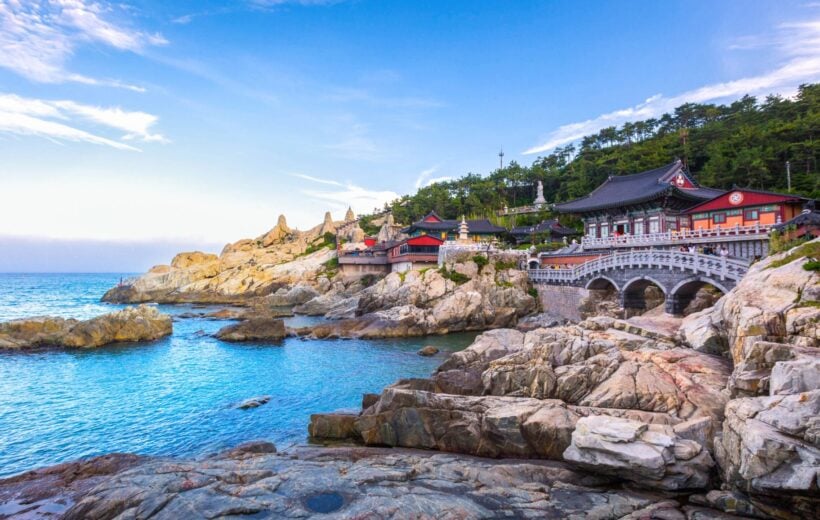
Local life
Traditional market
Culture village
Fish market
Fish market
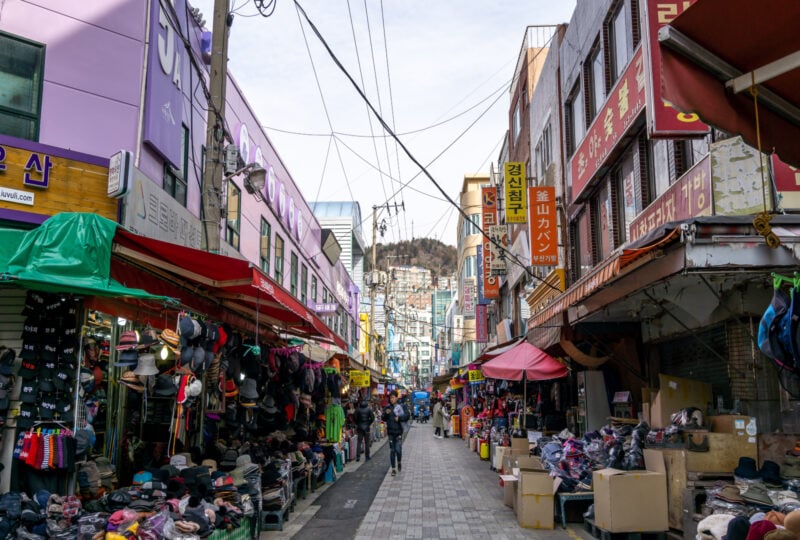
Gukje Market tour
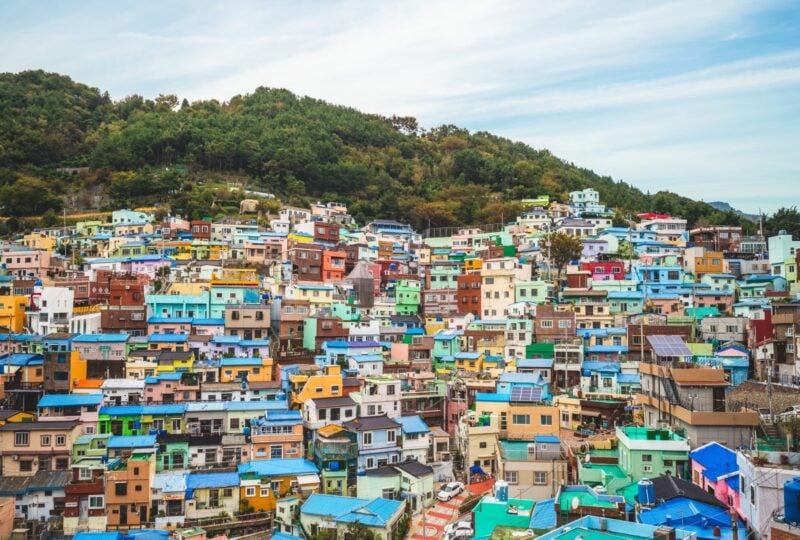
Gamcheon Culture Village
With its brightly colored houses and artistic flourishes, Gamcheon offers a delightful immersion into local life.
Explore its winding alleys adorned with vibrant murals and sculptures, each telling a story of the village’s rich cultural heritage.
Wander through this vibrant maze to discover small museums, art shops, cozy tea rooms and engaging workshops, all showcasing the creativity and ingenuity of the local residents.
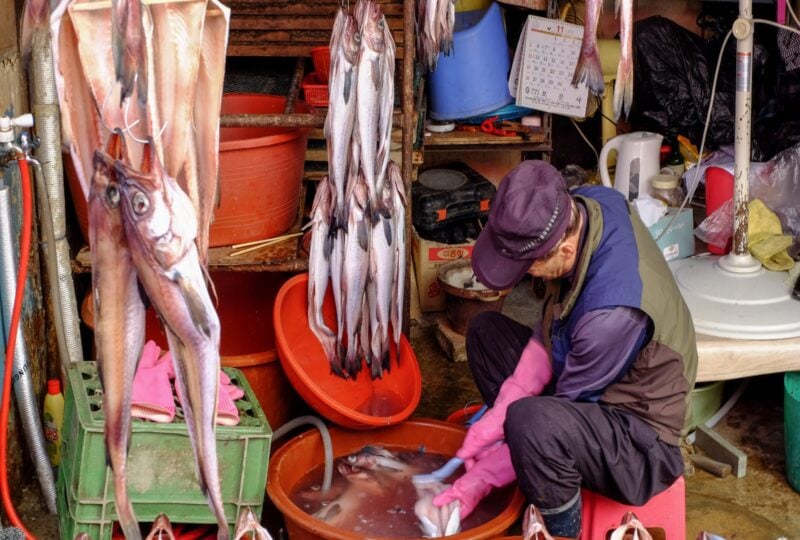
Jagalchi Fish Market tour
Visit Jagalchi Market, situated by the sea across from Yeongdo-gu Island and renowned throughout the country for its wide selection of live, freshly caught, and dried fish.
Here, you’ll encounter the iconic Jagalchi Ajumma vendors – women who dominate the market with their expertise and lively personalities. “Ajumma” signifies middle-aged or married women in Korean, adding a cultural flair to your immersive market experience.
A visit to the UN Memorial Cemetery
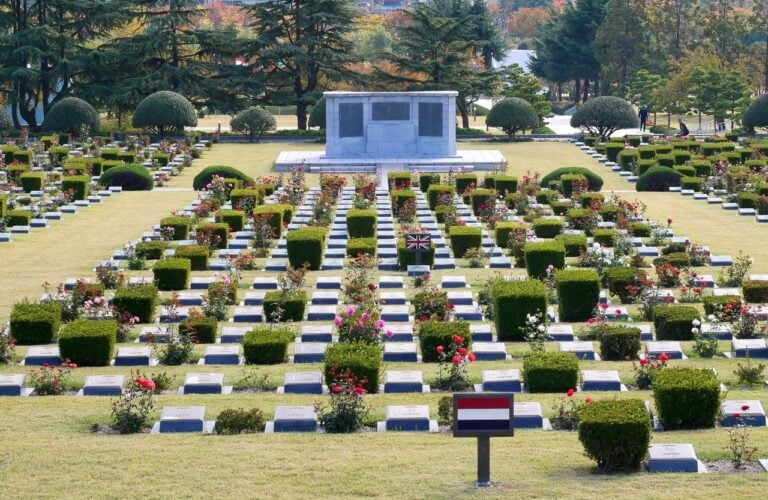
Step into history and honor the brave soldiers who fought in the Korean War at the UN Memorial Cemetery in Korea. This serene park, spanning 135,000 square meters, pays tribute to UN soldiers from 16 countries and UN aids from five countries who made the ultimate sacrifice during the conflict from 1950 to 1953.
Explore notable sites and memorials including the Memorial Service Hall, Memorabilia Hall, Turkish Monuments, Greek Monument, Australian Monument, British Commonwealth Monument, and tranquil ponds.
Constructed in 1964 and 1968 respectively, the Memorial Service Hall and Memorabilia Hall stand as solemn reminders of the war’s impact. The Main Gate, dedicated by the citizens of Busan in 1966, welcomes visitors to this hallowed ground.
Experience poignant annual events such as the Tributary Ceremony of the Veterans of the Korean War in April, American Memorial Day in May, Korean Memorial Day in June, and UN Ceremony Day in October, commemorating the sacrifices made for peace and freedom.
Three nights on Jeju Island
Jeju, the largest island off the coast of the Korean Peninsula, is characterised by the imposing presence of Hallasan, the volcano that gave rise to its formation and stands as the highest peak in South Korea.
As you traverse its landscape, you’ll descend through lush forests, pass by villages crafted from dark volcanic stone and encounter the iconic dol hareubang grandfather statues hewn from basalt. Along its coastline, Jeju unveils a stunning vista of sheer cliffs, cascading waterfalls and pristine beaches, adorned with vibrant wildflowers, casting a spell of natural beauty. Nestled amidst this picturesque scenery are remarkable temples and lava tubes waiting to be explored.
Adding to its allure, Jeju magnetises visitors from far and wide, with its status as the preferred honeymoon destination for newlyweds in Korea and the distinction of hosting the world’s busiest air route between Seoul and the island. Moreover, the island’s culinary offerings are a highlight, boasting an array of fresh seafood delicacies. Notably, Jeju’s seafood is renowned, much of it harvested by the skilled haenyeo women, who free-dive for clams, abalone, octopus, squid and seaweed without the aid of breathing apparatus.
While on the island, you’ll have the opportunity to visit the Yumin Art Nouveau Collection, as well as the Bonte Museum – both offering a glimpse of local talent and traditional art in Korea.
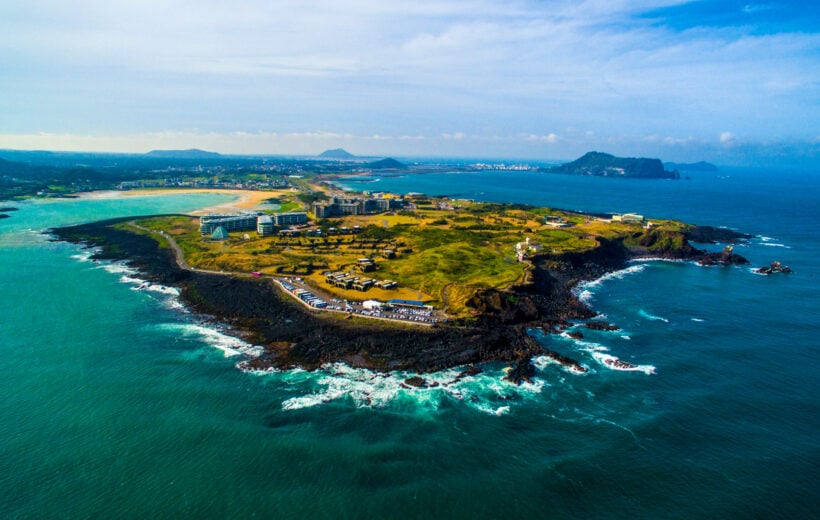
Natural wonders
Sunrise hike
Coastal hike
Chasing waterfalls
Chasing waterfalls
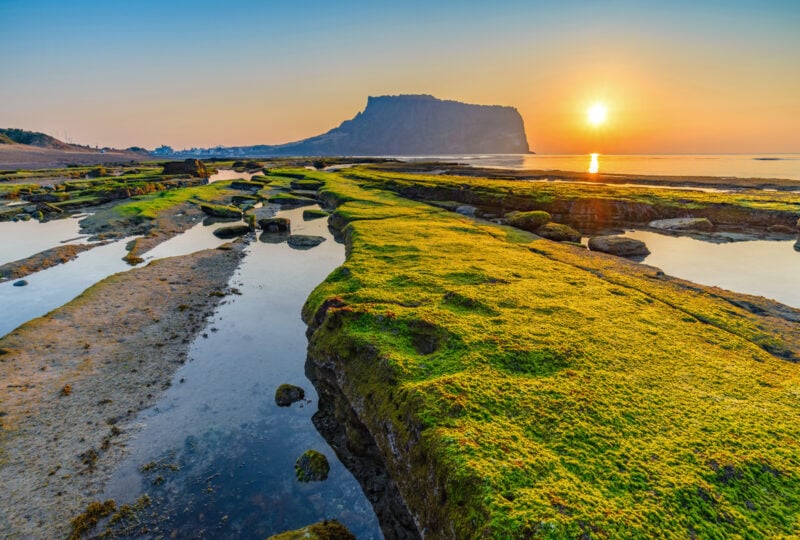
Seongsan Ilchulbong Peak at sunrise
This guided tour invites you to delve into the natural splendor and rich history of Seongsan Ilchulbong Peak.
As you ascend the rugged slopes of Seongsan Ilchulbong, your expert guide will regale you with tales of its geological formation, which dates back thousands of years to a volcanic eruption that shaped the island’s dramatic landscape.
Marvel at the breathtaking panoramic views of the surrounding seascape as you reach the summit, where you’ll be greeted by the sight of the sun rising majestically over the horizon, casting a warm glow upon the tranquil waters below.
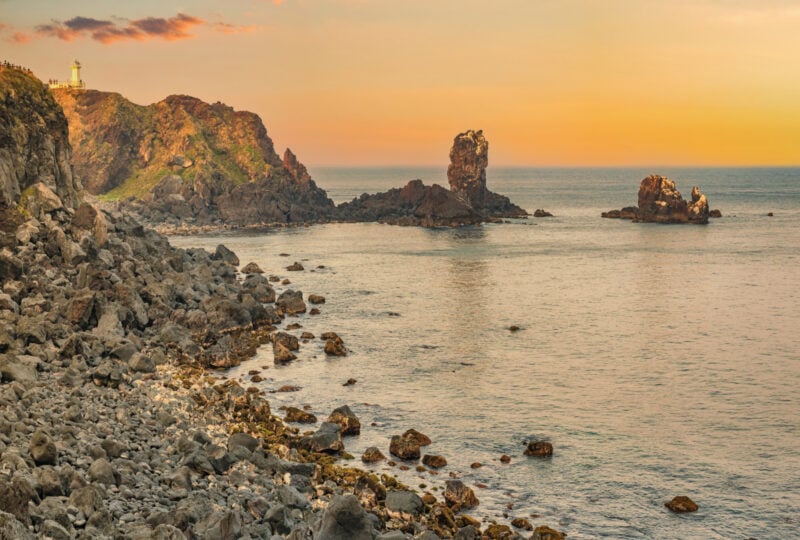
A guided hiking tour to Seopjikoji
Begin your adventure by exploring the vast expanse of rolling hills adorned with lush greenery, where the breathtaking views of the surrounding coastline stretch as far as the eye can see.
Your knowledgeable guide will lead you through the winding paths, sharing fascinating insights into the history and significance of Seopjikoji, known for its dramatic cliffs, rugged terrain and panoramic vistas.
Marvel at the unique rock formations and coastal landscapes that have inspired artists and poets for centuries.
From here, you will also see the historic Seopjikoji lighthouse, where you can learn about the area’s maritime heritage and enjoy breathtaking views of the surrounding seascape.
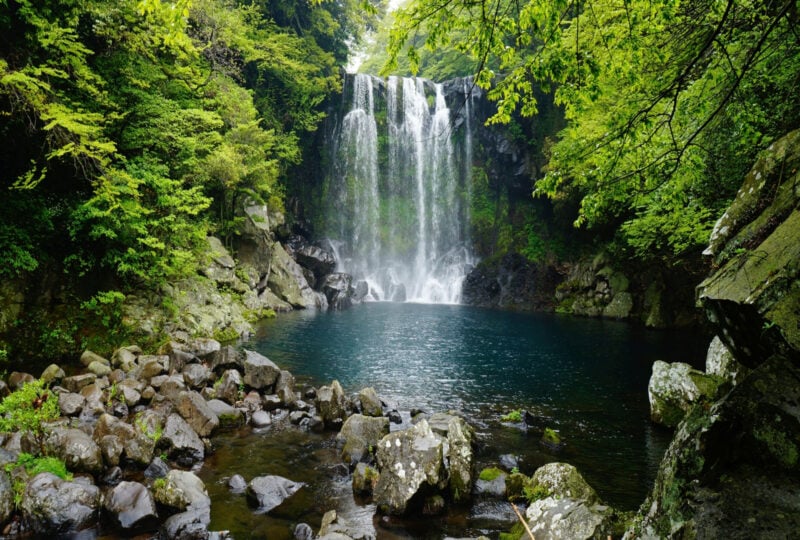
A tour of Cheonjiyeon Waterfall
Cheonjiyeon Waterfall, located on the stunning island of Jeju in South Korea, boasts not only natural beauty but also a rich historical and cultural significance.
Its name, which translates to “Pond of the Emperor of Heaven,” reflects the waterfall’s esteemed status in local folklore and mythology.
Legend has it that the gods sent their celestial beings to this waterfall to bathe, thus blessing the water with divine purity and healing properties.
Throughout history, Cheonjiyeon Waterfall has been revered by locals and visitors alike for its tranquil ambiance and believed rejuvenating powers.
Today, it stands as a cherished symbol of Jeju’s natural heritage.
A glimpse of local culture at Seongeup Folk Village
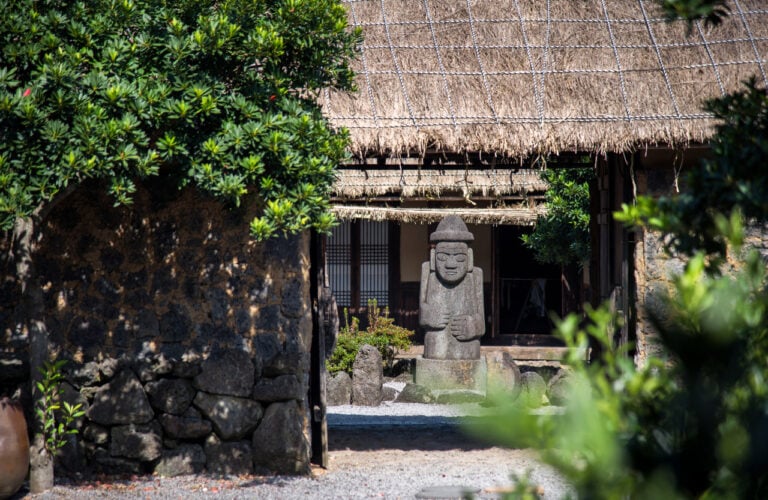
Seongeup Folk Village embodies the distinctive culture and traits of Jeju Island, featuring iconic elements like the black lava rock walls, strategically designed alleys that are both straight and curvy to shield against the wind, and the ubiquitous stone grandfather statues known as Harubang.
While it shares similarities with traditional folk villages, what sets it apart is the fact that it remains a thriving community where people continue to reside to this day.
Learn about Korea's tea culture at the O'Sulloc Tea Museum
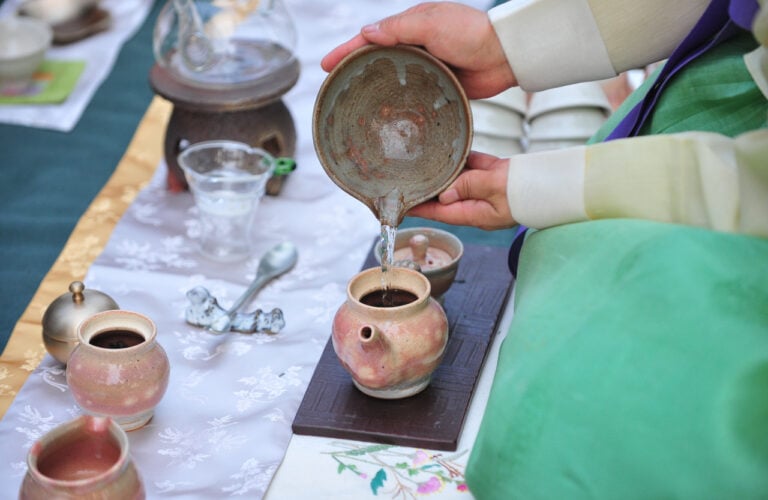
Step inside to discover a world of fragrant aromas and delicate flavors as you learn about the history of tea in Korea, from its origins to its evolution into an integral aspect of Korean daily life and social customs.
Immerse yourself in the art of tea-making as you observe traditional tea ceremonies and gain insight into the various types of tea produced in Korea, including the renowned Jeju green tea. Explore interactive exhibits, stroll through tea gardens and even sample a variety of exquisite teas at the museum’s tea shop
Where you could stay
Jeju Island
Overview
Shilla Jeju is a resort hotel located on the island of Jeju, just 50 minutes from the airport.
There are 429 bright and spacious rooms with mountain or ocean views. Decor is simple but elegant, with light colours and splashes pf pastel.
There are several restaurants to choose from, serving everything from Korean and Japanese to Mediterranean. There are also three bars as well as a pastry boutique.
There are two outdoor swimming pools with cabanas – one for adults and one for families – as well as one indoor pool. For those that like to stay active while on holiday, there is a fitness centre and tennis courts, while those looking to unwind will find all they need at the Guerlain spa.
→ Find out moreWe, as a family, have been privileged to go on a number of luxury holidays to some interesting places - from Peru to Pakistan and Mongolia to Mozambique - and this trip was right up there. Thank you for making it so special. To speak candidly it was a risk to move away from the more established tour operators that…
Why book with Jacada

Personalised design
We’ll plan your trip around your personal interests, tastes and preferences, providing honest advice based on first-hand knowledge.
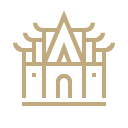
Authentic experiences
Our expert guides and brilliant Concierges are hand-picked for their ability to bring your destination to life with care and passion.

Positive impact
We seek out unforgettable experiences that benefit both local communities and the environment.
